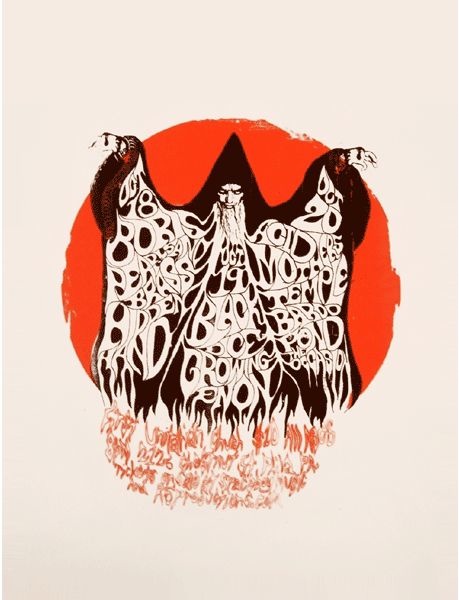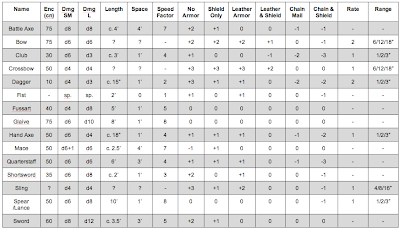So I hope everyone got a chance to check out my list of first level components that the local witch would sell if I decided to run my campaign with AD&D first edition. Not long after the announcement of the new reprints a someone on a thread over on Google+ asked what mechanical weirdness people would cut from the rules if they opted to run AD&D1 again. My from-the-hip answer was "almost nothing".
If I'm going to run AD&D again I'm going to try to tackle the whole dang mess. Hence the
new weapons chart I did a few days ago and
yesterday's material components chart. Ability score limits by gender are about the only thing I can think of that I would outright jettison. I'd even try keeping the stupid alignment rules.
Anyway, let's look at some of the issue surrounding material components for spellcasting.
CON: The are a giant headache for the DM. Obviously this is why no one uses them. Even with that
Dragon article assisting me, that chart yesterday was a giant pain in the ass to make. And it only covers the first level spell components for sale in one specific shop. Someone with programming skills could automate the process, but you'd still need a multi-page printout for each magic shop in your campaign world.
PRO: They're a tool for the DM. You know what's missing from Dremelza's shelf of first level components? Pearls, owl feathers and live miniature carp. Those plus wine are the necessary components for
Identify. She doesn't sell them (in fact maybe she
buys pearls at a fair price, if asked) because she holds a local monopoly on
Identify spells. A PC entering the region with
Identify is suddenly in a new situation. And what is RPG play if not an exploration of new situations?
CON: Players don't want to mess with this crap. AD&D1 already has a pretty intense character sheet. Do you really want to add tracking how much of each of the three things you need to cast
Friends? And what happens if you fall in a pit and half the little jars in your component pouch break?
PRO: Players can use this crap against enemy wizards. Enterprising thieves can forget backstabbing the necromancer, just swipe his belt pouch instead!
CON: Oh crap, that means I need to generate the component pouch of every NPC spellcaster. Again, a little computerfication should help here.
PRO: Thinking about where the NPC spellcastes get their components can lead to new adventure situations. Take the PC who wants to
Identify some stuff rather than pay Dremelza through the nose. Where does she get these components? She needs a good supply, given that she casts
Identify more often than just about any other spell in her spellbook (except maybe
Polymorph Other, people on her bad side tend to end up turned into animals). Perhaps her tiny carp and pearls come from the sea elves who live near the coast.
CON: Gathering components can really bog down a session. Imagine the party stumbles into a standard bat-filled cavern. The illusionist immediately starts pestering the DM about how much bat fur can be gathered to fuel his
Darkness spell. How the crap would I know?
PRO: Any activity that further the campaign that isn't just killing things will only make the play experience richer. In fact, my whole argument probably rests on this assumption. "I can't cast
Comprehend Languages because I'm out of salt" is a bummer for the PC and the party relying on him, but it sure keeps things interesting. And watching the players squirm as the elf swallows a live spider to cast
Spider Climb will never, ever get old.
Obviously this post isn't going to convince everyone to adopt material components. I'm not even trying to do that. But let's talk this out. If you see an objection that I missed or you feel I've glossed over, please say so in the comments.































































































































































.JPG)



































.png)

.png)

.jpg)





















.gif)






